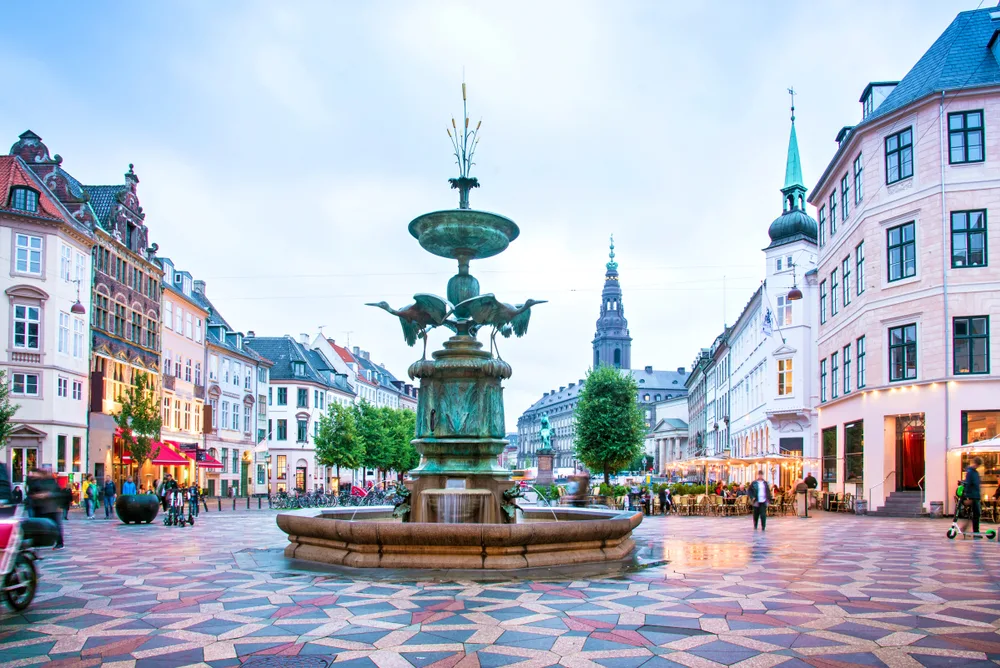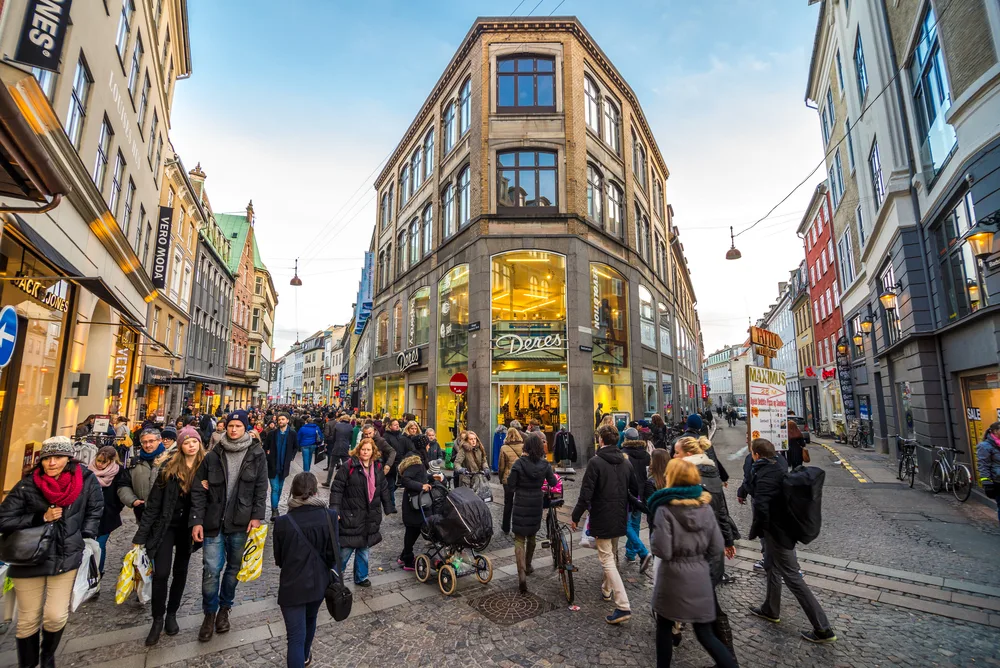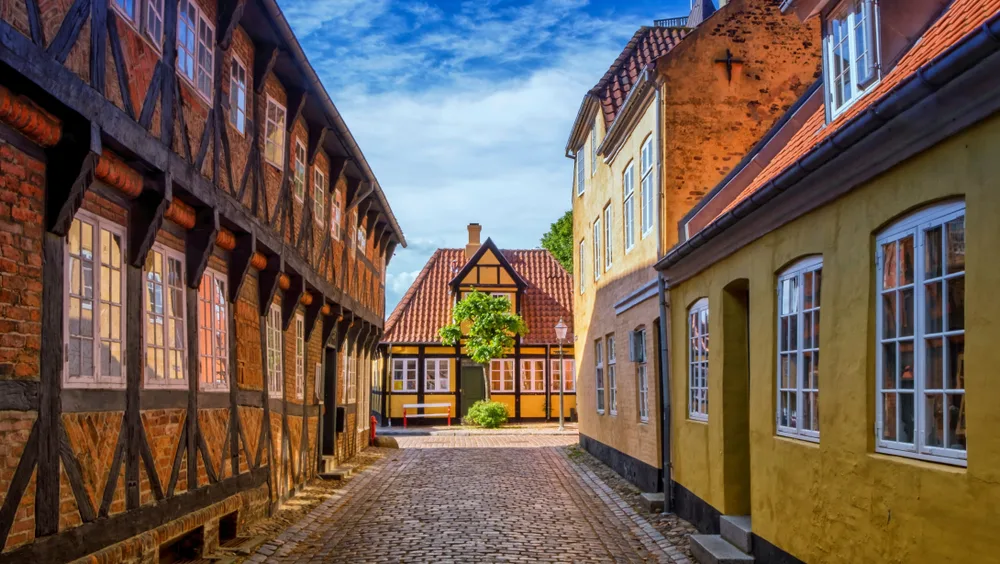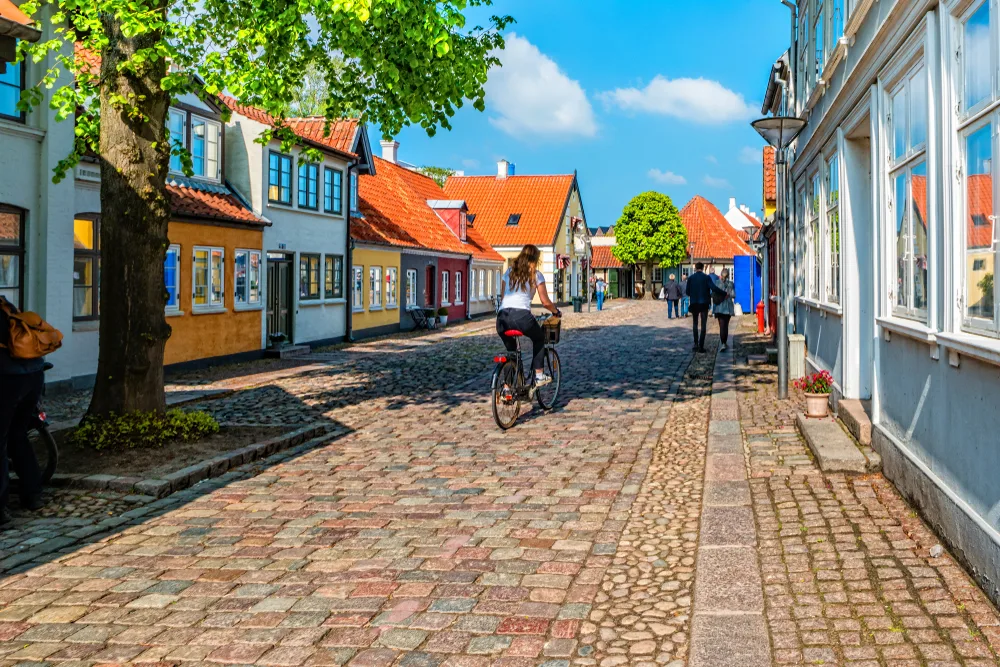What's the best time to visit Denmark?
The best time to visit Denmark is during the summer months from June to August when the weather is warm and the days are long, especially in June, which is less crowded. Denmark’s temperate climate is influenced by the Gulf Stream, making winters not too cold and summers pleasantly warm.
Summer is the ideal time to explore Copenhagen, enjoy outdoor cafes, and attend various festivals and events, including the famous Tivoli Gardens amusement park and Copenhagen Jazz Festival.
Denmark is a great European destination for lovers of design and sophisticated culture. The Scandinavian country is one of the global centers of culture.
Most people flock to Denmark for its capital, Copenhagen. Copenhagen has famous landmarks such as the Tivoli Gardens and the Little Mermaid statue, as well as one of the best art, design, and restaurant scenes in the world.
Outside of the capital, visitors can go to design capital Aarhus, or visit some of the coastal regions for desolate, wind-swept islands with unforgettable vistas. The country has a lot to offer, but thanks to its northern location, its seasons vary wildly.
Depending on when you go during the year, you will have a very different experience. This travel guide can help you plan your trip to Denmark and figure out when is the best time to visit!
The Overall Best Time to Visit Denmark

COPENHAGEN,DENMARK-MAY 18,2023: Tivoli Gardens is Copenhagen’s famous and magical theme park, located right in the heart of the city. It is the third-oldest operating amusement park in the world/Suratwadee Rattanajarupak/Shutterstock
The best time to visit Denmark is summer, when the weather is warm, and the days are long, perfect for exploring. The best summer month is June, which has the fewest crowds.
Summer is the warmest time in Denmark. In July and August, the average high temperature is 21 degrees Celsius, or about 70 degrees Fahrenheit. June is only slightly cooler, at 66 degrees Fahrenheit (19 degrees Celsius). Warm temperatures continue into the end of September.
Summer and fall are the rainiest seasons in Denmark, but it rains fairly evenly throughout the year in the country. That means that any time you go, you have a good chance of getting caught in the rain, but also of enjoying sunny days.
Denmark enjoys a far more temperate climate than other Nordic countries thanks to its location along the path of the Gulf Stream.
Winters are cold, but not too cold, and summers are warm but not overly hot. In coastal areas in particular, the weather is always temperate, although the winds pick up, especially in winter.
The country comes alive in the summer as Danes take advantage of the longer days and better temperatures. Seasonal infrastructure such as ferries to nearby islands usually starts up by the end of May or early June, making summer the easiest time to visit the country logistically.
Summer is also the best time to visit Copenhagen, Denmark’s capital and main destination for tourists. The city’s sidewalks are packed with terraces for cafes, and people stroll around long into the night to take advantage of the long summer days (the sun only sets for a few hours).
Many of Copenhagen’s most famous attractions have longer hours in the summer to accommodate the longer days and even put on special events. Some of Denmark’s most famous attractions are only open in the summer.
The Tivoli Gardens, the city’s famous amusement park, is only open during the summer, Halloween, and Christmas, so if you want to see it, the best time to visit is during warmer weather! During the summer, you can also enjoy a weekly concert series and fireworks in the park.
Copenhagen also has several famous summer festivals, such as:
- Copenhell (heavy metal festival, June)
- Royal Run (June)
- Sankt Hans/Danish Midsummer (June)
- Copenhagen Jazz Festival (July)
- Copenhagen Fashion Week (August)
- Copenhagen Pride (August)
Cheapest Time to Visit Denmark

Andrew Mayovskyy/Shutterstock
The cheapest time to visit Denmark is February and March, when the winter doldrums chase away a lot of potential visitors and prices go down.
By February, the holiday rush dies down and there aren’t that many tourists in Denmark, even in the capital Copenhagen, which operates as a year-round tourist destination. That means that many hotels offer discounts to guests that end up traveling during the off-season.
If you are flying to Denmark, the least expensive time to fly is in late January and early February. After Christmas and New Year’s Day are over, flight operators enter into a lull period when people travel less, so they also offer discounts.
January also sees savings in unexpected places. Many stores in Copenhagen have post-holiday discounts, so if you want to go on a shopping trip, this is the best time.
If you are visiting Copenhagen, make sure that you check the events calendar ahead of time. Winter events such as Copenhagen Fashion Week can raise prices slightly, although not nearly as much as during the summer high season.
If you want to save money but still want warmer weather, then spring is the best time to visit. Spring in Denmark is beautiful as the weather starts to warm up, but the crowds are not here yet, so prices aren’t as high as they are in the summer.
Least Busy Time to Visit Denmark

Andrij Vatsyk/Shutterstock
The least busy time to visit Denmark is in the winter after the holidays are over. Between mid-January and mid-March, there are very few people around.
If you still want to do outdoor activities but want to avoid the crowds, then chilly winter may not be the best time to visit. Either early spring or late fall would be great to avoid the high season crowds but still enjoy good weather for cycling and hiking.
Even during the high season, Denmark doesn’t get very crowded (especially outside of Copenhagen). Danes value their space, so you won’t find anyone breathing down your neck even in the middle of summer.
Worst Time to Visit Denmark

COPENHAGEN – 31 DECEMBER 2013 People crowd at the Stroget street on December 31, 2013 in Copenhagen/Devteev/Shutterstock
The worst time to visit Denmark is in the winter, when the weather makes it very hard to get any exploring done. Danish winters aren’t very cold, not as cold as they are in Sweden or Norway.
However, they are very gray and overcast, and only have about six hours of daylight a day. Those are hardly optimum conditions for exploring, since you can’t go cycling or hiking (swimming is even more out of the question).
Many attractions, such as the Tivoli Gardens, and even some public transportation lines close during the winter. It may be harder to get to more remote parts of the country.
However, winter in Denmark is a good time to visit one of the cities, especially Copenhagen. Stay indoors and enjoy the famous Danish hygge, a local form of coziness.
Denmark by Month: Climate & Activities

Elenarts/Shutterstock
Still unsure about the best time to visit Denmark? Take a look at our summary of the weather and climate by month below:
January
Winter temperatures in Denmark range from -2 to 4°C (28-39°F). January is an ideal time for winter sports in places like Rold Forest, exploring Copenhagen’s museums, and experiencing the cozy hygge atmosphere.
February
Similar to January, February maintains cool temperatures between -1 to 4°C (30-39°F). Visitors can enjoy winter festivals, explore the Tivoli Gardens in Copenhagen, and experience the traditional Fastelavn carnival celebrations.
March
As spring begins in Denmark, temperatures in March range from 1 to 7°C (34-45°F). March is perfect for exploring the historic city of Aarhus, visiting the iconic Little Mermaid statue in Copenhagen, and enjoying the budding spring scenery.
April
Spring temperatures in Denmark range from 4 to 11°C (39-52°F). It’s an ideal time for enjoying the cherry blossoms in Bispebjerg Cemetery, exploring the Louisiana Museum of Modern Art, and attending Easter events.
May
May sees temperatures ranging from 8 to 16°C (46-61°F). It’s a great month for exploring the beaches of Skagen, attending the Aalborg Carnival, and enjoying outdoor activities in the Tivoli Gardens.
June
In June, summer arrives in Denmark with temperatures between 12 to 20°C (54-68°F). June offers opportunities for cycling along the Danish Riviera, exploring the historic town of Odense, and attending the Roskilde Festival.
July
July maintains mild temperatures from 15 to 22°C (59-72°F). It’s a popular month for enjoying the sandy beaches of the Wadden Sea, exploring the Viking Ship Museum in Roskilde, and attending the Copenhagen Jazz Festival.
August
Temperatures in August range from 14 to 21°C (57-70°F). It’s an excellent time for exploring the cliffs of Møn, attending the Aarhus Festival, and enjoying outdoor concerts and events.
September
As fall begins in September, Denmark’s temperatures range from 10 to 16°C (50-61°F). September offers a pleasant transition, with opportunities for wine tasting in the Danish vineyards, exploring the historic district of Helsingør, and enjoying the changing colors of the countryside.
October
In October, Denmark sees temperatures ranging from 6 to 11°C (43-52°F). It’s a great month for visiting the Hans Christian Andersen Museum in Odense, exploring the picturesque town of Ebeltoft, and experiencing Halloween events.
November
Fall temperatures range from 3 to 7°C (37-45°F). November is perfect for exploring the Christmas markets in Copenhagen and Aarhus, visiting the Tivoli Gardens during the festive season, and experiencing the cozy holiday atmosphere.
December
Winter returns with temperatures ranging from -1 to 3°C (30-37°F). December brings opportunities for holiday festivities, exploring the Christmas-decorated streets of Copenhagen, and enjoying traditional Danish Christmas cuisine.
Frequently Asked Questions

Perekotypole/Shutterstock
These are some of the most common questions about planning a trip to Denmark and can help you with your trip planning as well:
What are the best months to visit Denmark?
The best months to visit Denmark are the summer months of June, July, and August. The weather is the best for exploring and cycling during this time.
How many days are enough for Denmark?
You want to budget at least one week for visiting Denmark. Give yourself a few days to explore Copenhagen, then use the rest of your time to explore the coast and some of the smaller cities.
When is the rainy season in Denmark?
Summer into the late fall and early winter is the rainiest part of the year in Denmark. However, rain is frequent any time of the year.
What time of year is best in Copenhagen?
May and early September are the best times to visit Copenhagen. That way, you can take advantage of the gorgeous summer weather, but avoid the worst of the high season crowds.
Is Denmark better in winter or summer?
Denmark is better in the summer because the days are longer, and the weather is warm. Since winters are relatively mild, there aren’t as many opportunities for winter sports here as in other Scandinavian countries.
So, What’s the Best Time to Visit Denmark?
The best time to visit Denmark is during the glorious Danish summer. Between June and the end of August, temperatures are warm, the sun shines for nearly 20 hours a day, and Danes flood the streets of Copenhagen and the countryside.
In the summer, there are plenty of music festivals and amusement parks to entertain, as well as prime cycling opportunities. But, regardless of the season changes, there’s really no bad time to visit Denmark. So what are you waiting for — book your trip to this picturesque country today!



